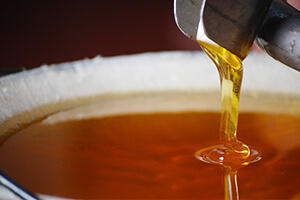
Introduction
Honey prices have steadily and precipitously fallen over the past year. The burdens upon beekeepers and honest players in the international honey market are terrible to bear. The Alberta Bee News reprinted a letter from the Canadian Honey Council to the Minister of Agriculture and Minister of Health in May, 2016, stating:
“Unfortunately, the cost of production has not decreased in relationship to honey prices. In fact, we are observing the opposite, prices are decreasing and expenses are increasing. Current programs do not address the unique situation the beekeepers are finding themselves in… the U.S. has imposed anti-dumping tariffs on Chinese honey as high as 223%…we do not want to see Canada being used as an alternate point of entry…”
Honey prices from trusted and reliable honey-exporting countries such as Argentina have declined 50-60%, due to both 1) an excess of world honey inventories from the 2015 crop and 2) difficulties selling the 2016 crop, even at substantially depressed prices.
In September, 2014, I spoke to the South American Beekeepers Conference in Iguazu Falls and indicated that a Point of Inflection had been reached. Now the international honey market urgently needs to reach a Point of Stability from which processes of recovery may commence. The market, like the human body, needs an integration of all its parts. We cannot achieve a healthy stability unless we understand the causes for the precipitous and disastrous decline in prices. Such understanding requires a clear perspective on the role of circumvention, transshipment, adulteration, contamination, fraud, nefarious methods of both producing honey and disguising its origin, and the irresponsible ambitions propelling a distorted market.
U.S. Honey Production and Prices
Dr. Stan Daberkow, formerly economist for the U.S. Department of Agriculture, and co-author of our Chapter on Marketing in the Hive and the Honey Bee, has insights regarding the overall environment within which the American market is functioning. He has illustrated the significance of the American beekeeping industry to American agriculture as a whole. We note that beekeepers provide pollination services essential to producing over one-third of the American food supply inclusive of some of the most anti-oxidant and phyto-chemically rich foods vital to a healthy human diet and the prevention of human disease.
The pattern of declining yields per hive in the US is due to various bee diseases, colony collapse disorder, pesticides which are toxic to bees’ neurological system, loss of forageable land, and volatility of severe weather patterns. These conditions are replicated in many countries which have experienced, mature and sophisticated beekeeping expertise. Richard Adee, whose company manages 80,000 beehives, recalls when yields of 150 lbs/hive were normal. Now 50-70 lbs./hive represents the norm. This experience in mature producing countries is in sharp contrast to the apparent huge increases in quantities and productivity reported in several of the emergent honey-exporting countries.
It is also worthy to note that ecade was increasing, exceeding 500 million pounds in 2015, and annual per capita consumption was stable despite significant and steady rises in raw honey prices. Both retail and wholesale prices of honey increased steadily for 10 years preceding January 2016.
As illustrated in the chart below, while from 2013 to 2016 honey prices declined while the prices of wholesale and retail honey increased, significantly widening the gap between inputs and outputs.
According to National Honey Board Statistics, total U.S. honey consumption was 512 million pounds per year in 2015. When other factors and data are considered, including production of honey by smaller producers and sales through markets that are not tracked, total US consumption is estimated at 550-600 million pounds per year. Honey is a “small luxury,” a natural and pure product and one whose health benefits await further scientific and medical investigation. As that happens, we anticipate further growth in both total honey consumption and per capita honey consumption.
The precipitous recent decline in imported honey prices clearly was …


